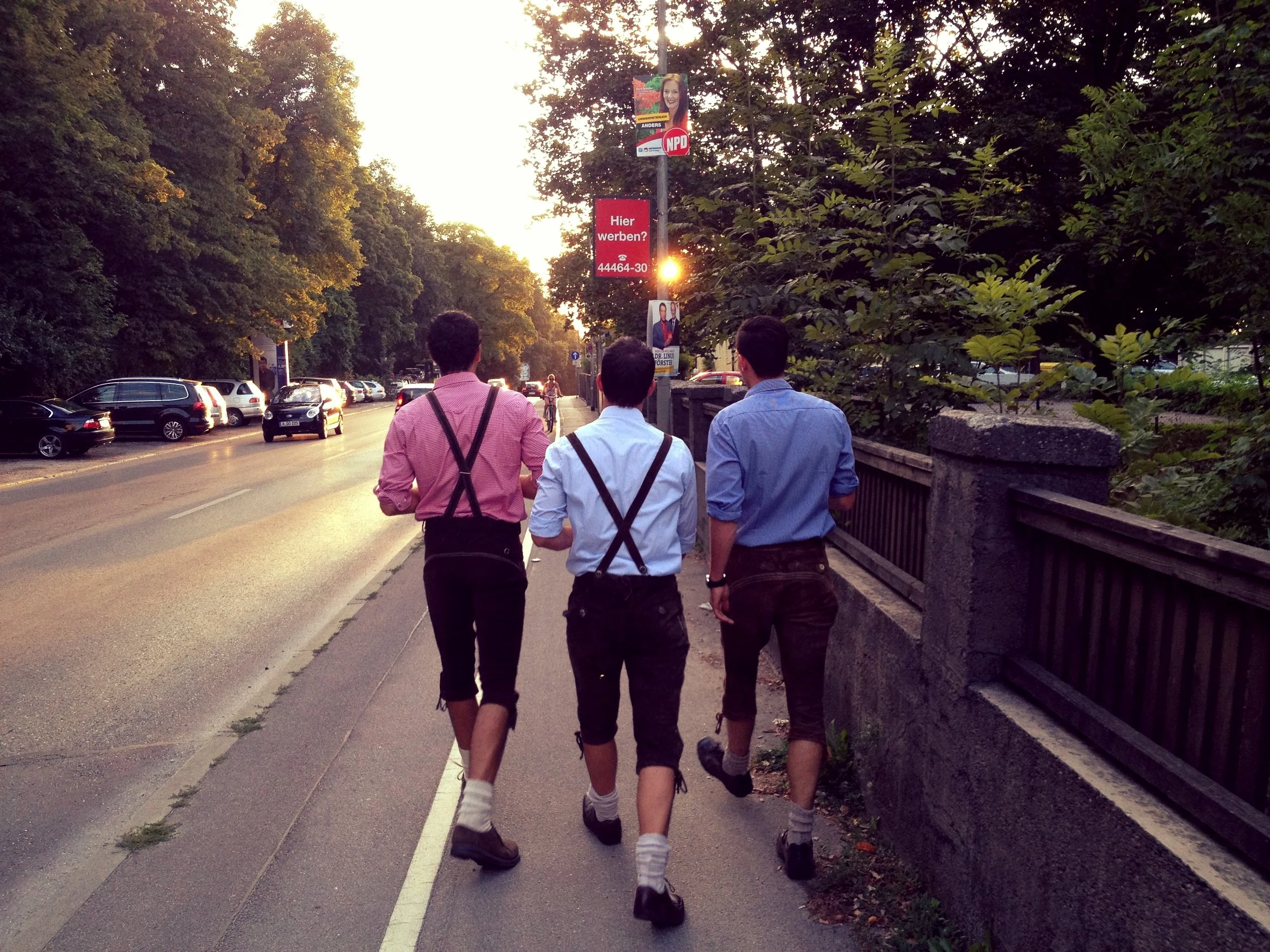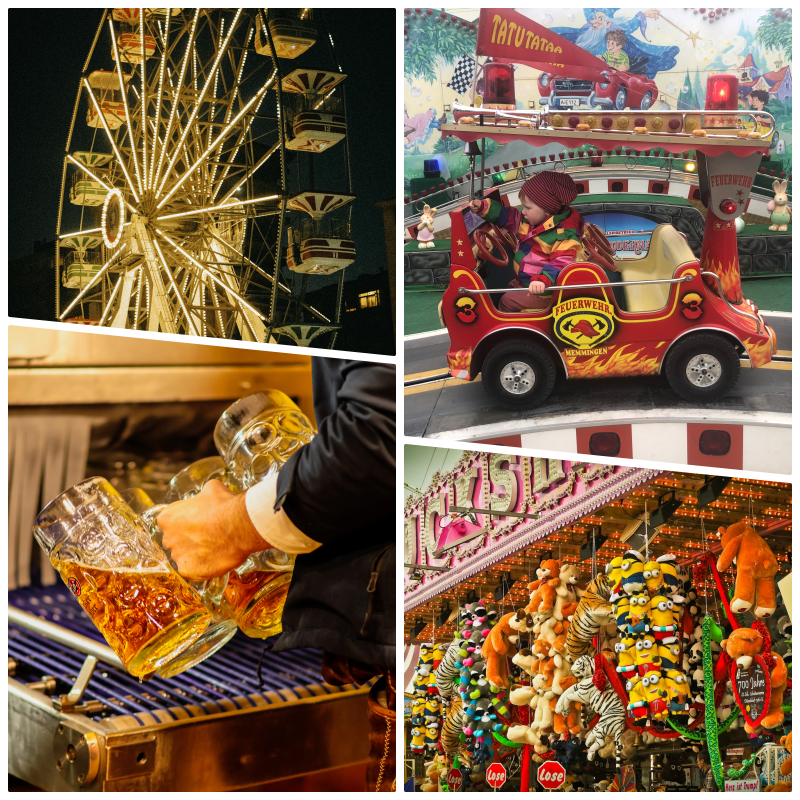Maibaum Madness
As Easter recedes into memory, Bavarian minds turn towards another annual celebration. May Day falls on a Sunday this year, meaning we lose one of our precious public holidays. Thankfully that has done little to dampen spirits. May has always been a time for celebration in Germany, but due to two years of lockdowns and cancelled festivals, May Day 2022 feels different. There is a clear sense that people are looking forward to normal service resuming on festivities. Waiting in the early morning queue at the bakery, people were already discussing plans for the weekend, many of which revolved around watching the raising of the Maibaum.
It’s natural for those of us non-Germans to notice the many differences around us, but I’m sure I’m not alone in appreciating the similarities. Maibaums (May Poles) are one such parallel. Although I can’t remember actually seeing that many May Poles while living in the UK, I do know that many places enjoy the tradition. The May Day Bank Holiday is celebrated with may pole dancing, church fetes, both of which can quickly lead to a larger outbreak of Morris dancers. That being said, for every common tradition there is a slight variation. For instance, German May Day isn’t usually focused on synchronised dance numbers, although a Tanz in den Mai (Dance into May) happens in some areas. Usually the the most important part of proceedings is watching a large group of people wrestling with a frankly ridiculous long pole or tree trunk, often encouraged by a larger group of beer drinking bystanders. Fixed atop the Maibaum is an actual tree, sometimes decorated with ribbons and sometimes not, which will stay in place well into the summer.
Trees also figure into another German tradition. On the night of April 30th, young people can be seen, under the cover of darkness, leaving small, decorated Maibaums outside the homes of potential partners. These trees signify, if not full on love then at least a passing fancy in the recipient. Flowers might be the more obvious method of expressing a person’s feelings, but in a pinch a nicely decorated tree will fill that gap. However, be wary of trees decorated in white. Those are not delivered with romantic intentions, but as a warning that the occupant of the home is either unwanted or worse an enemy. While the rest of the world deals with online bullying, in Germany people have to get to grips with coded tree messages.
There is more to May Day in Germany beside Tree based communications. The Easter decorations are barely packed away before many cities open their Volksfeste to the general public. Since late last week, the Augsburger Plärrer has been in full swing, something that’s hard to miss given the wealth of adverts declaring the return of one of the cities favourite events. Even if I missed the adverts, seeing crowds of people dressed in a diverse range of Trachten, merrily marching on mass to the Festplatz would be a certain give away. Going by the bleary eyed commuters on our Tram this morning, this year’s is unsurprisingly very popular.
With fairground rides, beer tents and live music, it’s easy to see why so many people have missed these occasions over the last two years. Whether it’s a small Dorffest or the larger Volksfeste both can be best described as mini Oktoberfests, although this might be an unfair comparison. Where the Oktoberfest has increasingly become an example of the commercialisation of German traditions, the local Fests retain much of their local charm. The beer still comes in 1 litre glasses, the benches are set up in organised rows and the music can still range from the traditional Blasmusik to AC/DC. Crucially, there are fewer crowds and cheaper beer.
Here again we find another connection to British May Day revelry. Back in my home city of Newcastle, May Day is also celebrated with a beer fuelled fun, although I would hazard a guess that the levels of alcohol consumed is higher in the North East than here in Germany. The May Day Bank holiday, which always falls on the first Monday regardless of the date, sees scores of Geordies head to the coast, namely Whitley Bay, to spend the day drinking and should the weather decide to play nice, sunning themselves on the beach. Whereas the Volksfests of Germany will often seem like organised chaos, the adventures of young permatanned Geordies hammering pints of Fosters is just bog standard chaos. The most obvious difference between the two is that I can happily spend an entire night in a beer tent sculling Maß bier, whereas it’s always advisable to leave the partying in Whitley Bay before the sun goes down. Trust me, here there be monsters.
It’s a sad fact that most nights out in the UK have a not so well hidden element of aggression underlying the fun. This is certainly not something I miss. The worst thing that might happen here is someone falling of a rocking beer bench, which is obviously not ideal, but it pales in comparison with being started-on by a reject from reality TV series about who has the tightest t-shirt. The many hyper professional wait-staff serving beer to Lederhosen clad party animals might be a bit direct, but they rarely leave a scar, well, at least not a physical one.
The arrival of the Volksfest also signifies something more in Germany, not only is it a celebration of the arrival of May, but also the arrival of the wider fest season. Throughout May, June and July, across the country there is barely a weekend that isn’t filled with some kind of traditional event with beer benches set up in their usual massed ranks. From Jazz festival, beer festivals, or festivals of local food, we’re really spoiled for choice. Given the excitement surrounding the first one of the season, this year may well be one to remember…barring a catastrophic hangover of course.
Image Credit
Photo by Flo Lorenz on Unsplash
enator86 via Wikimedia Commons









